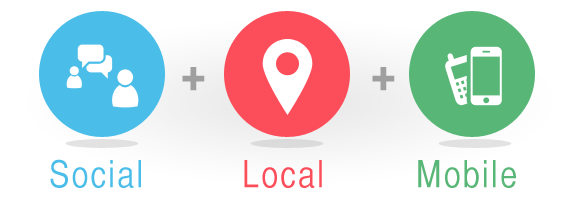Understanding SOLOMO Strategy
Ever since the blog on ‘Ten Commandments of Digital Marketing Strategy‘ got published, I have been thronged with questions from readers on why there was no mention of ‘SOLOMO Strategy’ in it. Therefore this blog to share more information on what SOLOMO Strategy is all about and how does it fit into the overall Digital Marketing Strategy of any marketer.

SOLOMO as a term is a combination of ‘Social, Local and Mobile‘. This is a relatively new term in the Digital Media domain. The term gained momentum due to the steep increase in people accessing Social Media from their Mobile Devices and started sharing their Location details. This is exactly the information that any marketer would need, don’t you think? If I get to know where and how I can reach my target audience and add to it the timestamp, my campaign management would become a lot easier than without these critical pieces of information. In an article recently published by Roy Morgan Research it has been mentioned that people who own a smart phone are more active to outdoor advertisements than the ones without a smart phone. It is but natural that the smart phone owners are active on the internet and therefore keen to search for more info online regarding the ads they see on the move.
Logically SOLOMO Strategy falls under the Web Presence Strategy mentioned in the Ten Commandments blog. Here is where a marketer decides whether or not should they have a SOLOMO Strategy within their overall Digital Marketing Strategy.
In order to use SOLOMO Strategy we need to first understand as to who it applies to. SOLOMO Strategy is a ‘Customer Loyalty’ enhancement program and is mostly useful for B2C companies than B2B companies. The primary reason for this is the strategy itself, it is more focused on individuals who use Social Media from their Mobile devices and share their Location details. SOLOMO is more of focusing on individuals than a group. Customers are individuals, therefore campaigns should also be used for targeting individuals than a group in order to achieve better results. The question now is ‘how is it possible? Does this mean we will have to define a million campaigns for a million individuals we are targeting? No, not actually. The following examples will tell you how easy it is to target individuals with SOLOMO Strategy.
Currently SOLOMO Strategy is considered to be the most effective tool for improving Brand Loyalty with all the B2C players. The most popular way of employing a SOLOMO Strategy is from a mobile app perspective as it is easier to track the user with ones consent. Below are just a few examples on how the strategy is being used by B2C marketers across various industries.
Retail Industry
This is one industry where the SOLOMO Strategy works wonders for both the marketer and the end user effectively. The end user installs fresh or starts an already installed application when in the store. The user is greeted with a welcome message and is immediately informed about the new offers and deals the store has in place for the user. The message can also be made very specific based on the user profile, purchase history and the past experiences shared by the user. The web application at the retailer end also tracks the location of the user within the store and suggests new offers / deals near to the aisle the user is. The app will also help the user in comparing prices, quality, ingredients and information of the product he/she is looking at buying. The app can also help the user to predict the billable amount even before reaching the billing counter. In case of reward points being applicable the app will help the user on the redemption amount or how much more he needs to buy in order to qualify for a reward. This way the user gets what he/she wants and the marketer has achieved the goal of targeting individual needs specific to the user.
Aviation Industry
Frequent fliers across the world are tracked with their locations and offered information on the best fares available to fly back to their local destination. Updates on the reward point status and the means of redemption are made available at the finger tips. Purchase of tickets and even the delivery of tickets electronically is made possible and the check in made possible by just scanning the QR code at the boarding gates. It is also an effective tool to send a class upgrade message to the user based on the final availability of the seats on the nth moment. This will make the user happy and will increase the brand loyalty and the marketer gets to add another loyal customer to his consumer base.
Insurance Industry
The customers install a mobile app locally that will provide alerts on their premium due dates and share updates on the new products. Information such as the nearest branch location and even customer service via chat message is made possible these days. All that one as a customer needs from a service provider is to be heard when it matters. This mobile app makes that possible and therefore a happy customer at the end of the day.
I hope the above three examples will help you understand better on how SOLOMO Strategy works. I will share more examples in my future blogs on this topic, but for now let’s go with these. The significance about SOLOMO that everyone should know is that this is a two way tool. On one end is the user and at the other is the marketer and information passes both ways. The user gets what he/she wants based on the preferences based on his/hers purchase history and the marketer gets to track the user behavior that will help them better their campaigns going forward. The mobile app for SOLOMO Strategy therefore is also a market intelligence tool that none can afford to ignore.
will be back with more examples on SOLOMO Strategy for other industries soon. Please feel free to ask questions if any or leave comments below and I will get back to you with answers. Thank you for your time.


